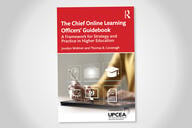You have /5 articles left.
Sign up for a free account or log in.
Do you know what percentage of your institutions budget goes for central IT spending?
My guess is that very few of us on campus can reel off this figure.
How might we enlarge discussions of academic IT spending outside of campus technology professionals?
What steps can we take so that more of us in higher ed have a common understanding of technology spending, and indeed total institutional spending, so that we can have conversations about appropriately investing our ever scarcer resources?
What resources can you point us towards that put academic IT spending in context to other types of higher ed budget allocations?
The EDUCAUSE Core Data Service (CDS) is an invaluable resource in understanding levels and trends in higher ed IT spending.
According to the latest CDS Benchmarking report (2015), an average of 4.2 percent of institutional spending goes to IT (averaged across all institution types).
It is important, of course, to understand not just the proportion of spending that goes to IT - but the absolute size of these investments. Institutions with larger budget may still spend less on IT as a percentage, but more in absolute dollars.
According to the CDS data, this is indeed the case. For instance, private doctoral granting research universities spend only 3.6 percent of their total budget on IT, but this adds up to $1,620 per institutional FTE (students, faculty, and staff).
In contrast, master’s granting private schools spend 4.5 percent of their budget on central IT, but only $987 per institutional FTE. The numbers for public doctoral institutions are 3.3 percent and $968, where primarily undergraduate (BA) schools spend 4.4 percent of their budgets ($1,281) on central IT.
One of the metrics that I find most interesting in the CDS benchmarks is how campus IT organizations spend their money. On average (across institutions) about 80 percent of the IT budget is spent on operations (run), about 13 percent on incremental changes (grow), and around 5 percent on non-incremental changes (transform). No institution type spends more than 8 percent of their technology budget on transformative projects.
For me, these benchmarks raise more questions than they answer.
What is the right level of IT spending?
How do do we separate central IT spending from distributed IT spending (technology spending outside the central IT budget - in professionals schools or other units).
Where does the central IT spending go? (That question can actually be answered if from the CDS data)
How much are schools spending on educational technology, and how are these numbers changing? (According to the EDUCAUSE report Educational Technology and Faculty Development in Higher Education, about 10 percent of total IT spending goes to educational technology services.)
How does higher ed IT spending compare to other information industries?
What types of spending would be counted in the “transform” bucket - and what should be this level of IT investment in academic transformation?
What resources can you suggest that give a concise and understandable picture of higher ed budgets and economics - including how resources are generated and where they are spent?
Are there comparable reports / datasets to the EDUCAUSE Core Data Service amongst other parts of higher ed - such as academic libraries, student affairs, development, registrars, etc. etc.
How can a student of higher education get their head around higher ed budgets?
How open and transparent is your campus in talking about money?




